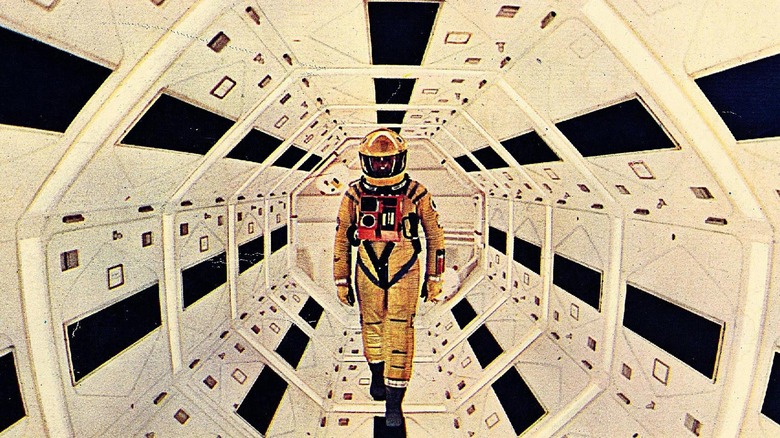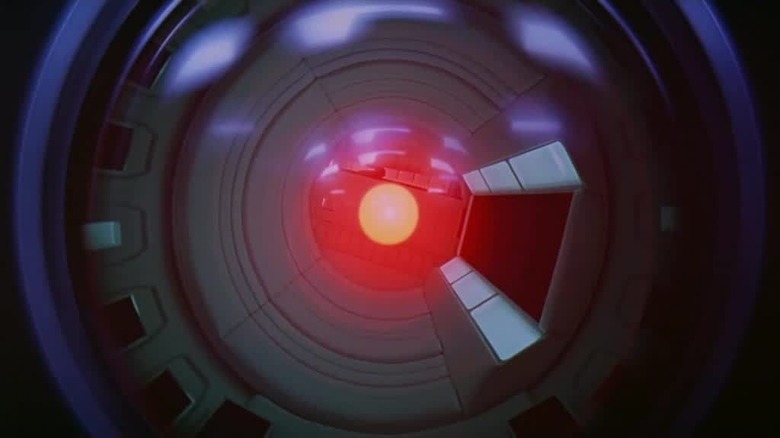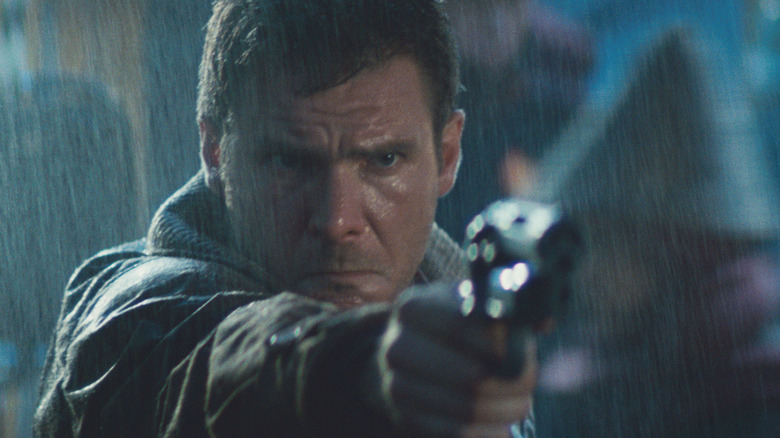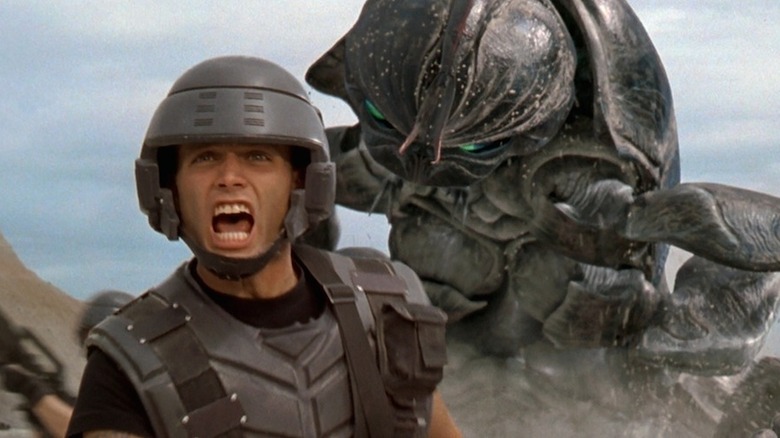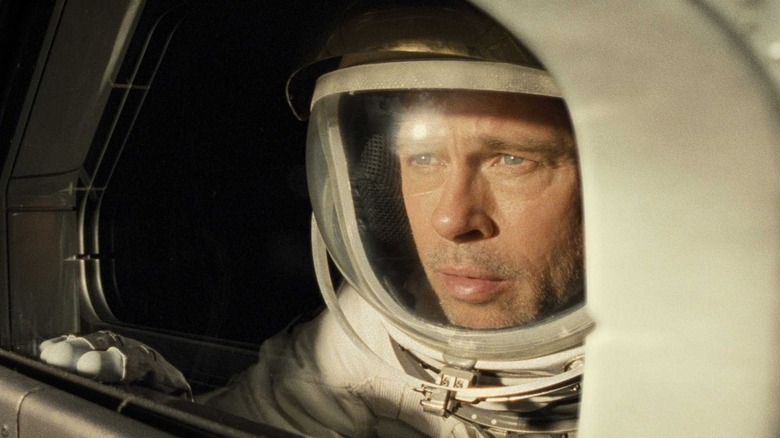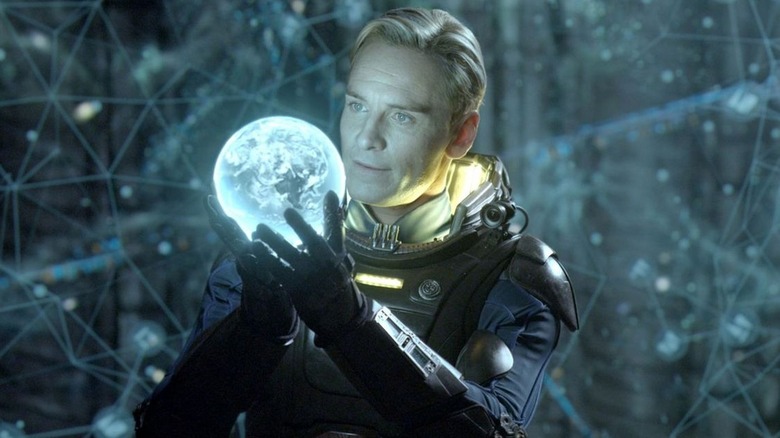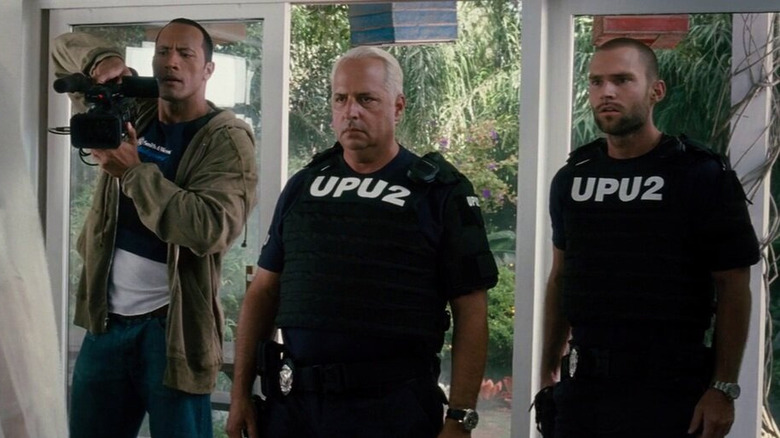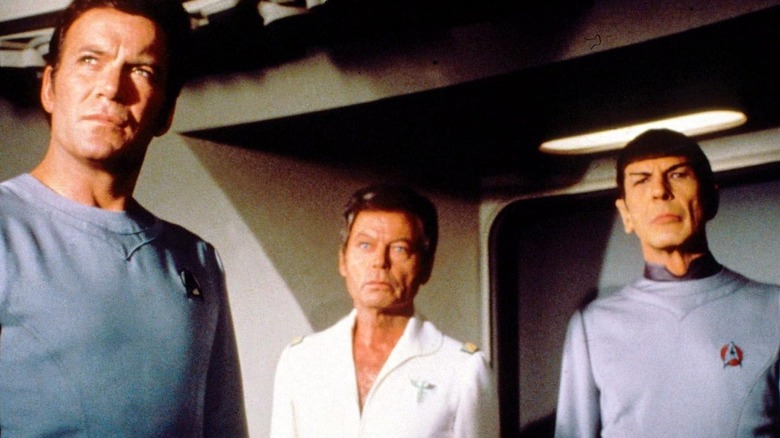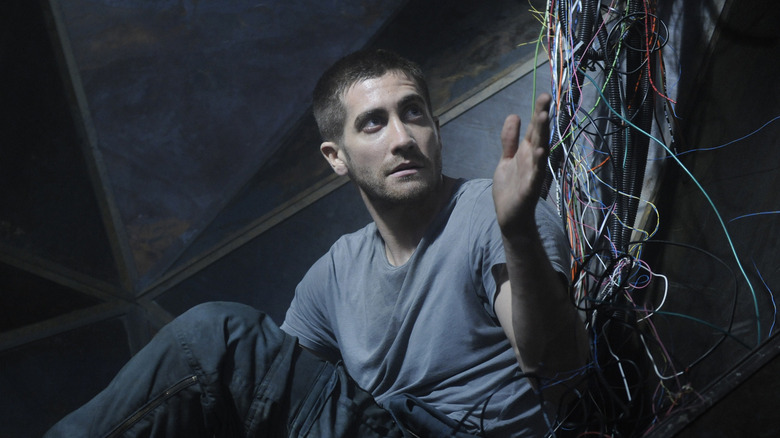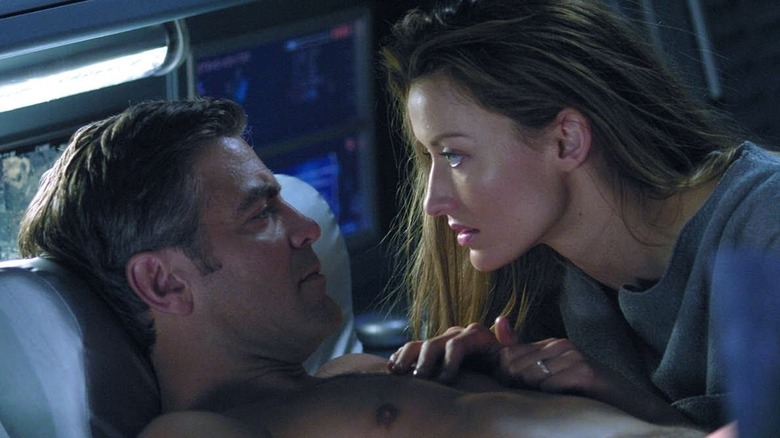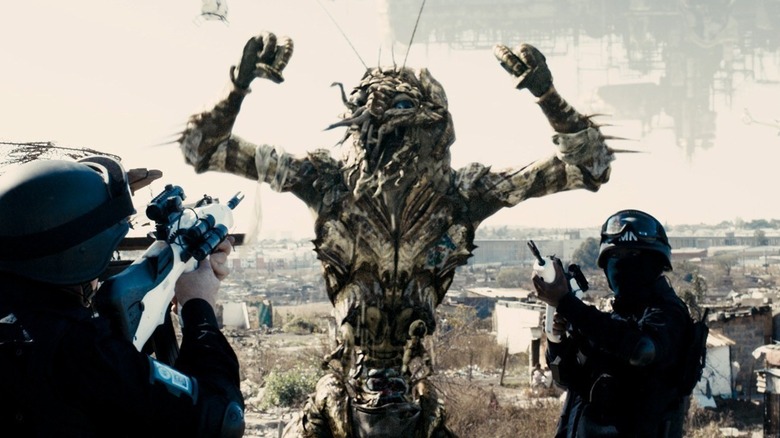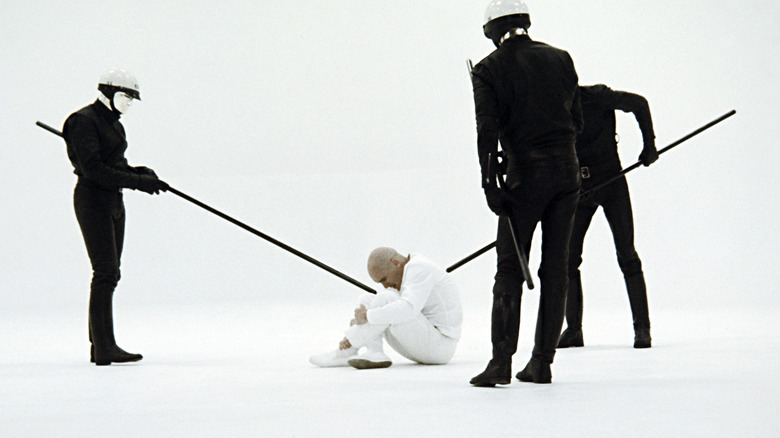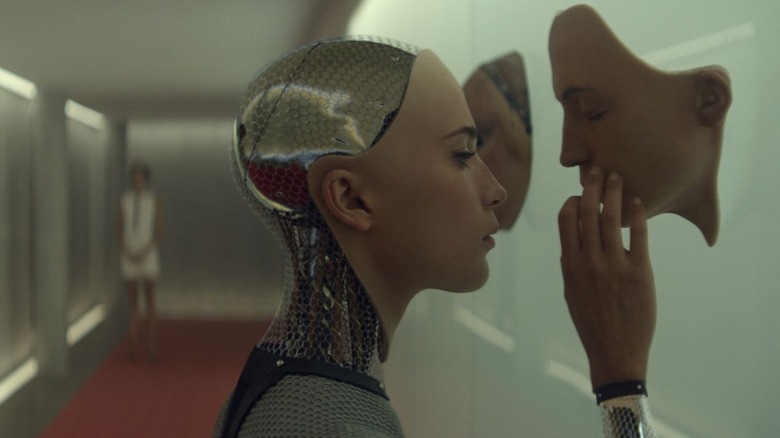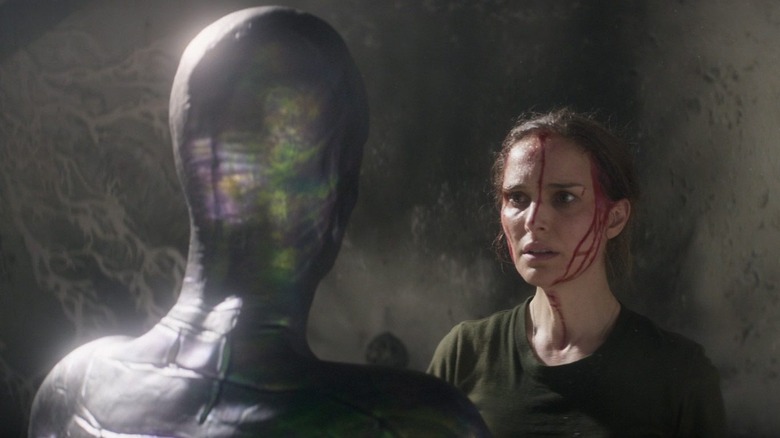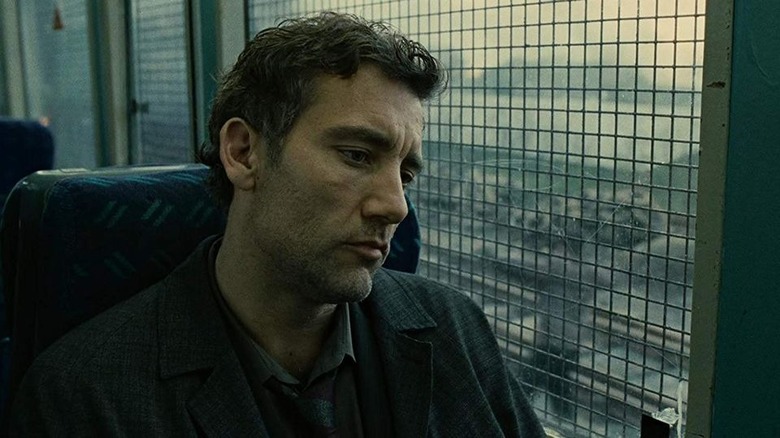Sci-Fi Movie Endings That Still Confuse Fans
One of the most fun aspects of science fiction fandom is the nature of a good debate. Sci-fi fanatics love to discuss the endings of their favorite movies, and what their different interpretations are. If everything remains civil, having a good chat with friends about a sci-fi movie that you disagree about may be both entertaining and insightful. Perhaps, you will look at the story in a new way if you hear someone else's point of view.
An open ending gives fans plenty of things to talk about. Whether they're contemplating what the future of a franchise has in store or discussing a standalone project, it can be exciting to speculate about what happens after the credits wrap up. The internet is filled with fan theories about different sci-fi films, some more believable than others. The 15 science fiction movies on this list are all classics, but their endings are still confusing for fans.
2001: A Space Odyssey (1968)
It goes without saying that Stanley Kubrick's 1968 film "2001: A Space Odyssey" is one of the greatest achievements in cinematic history. It's one of the few classic films that is as awe-inspiring today as it was during its initial release. One of the best things about the movie is its ambiguity. Over five decades have passed since the film was first screened, and sci-fi fans are still debating what the monolith, the Star Child, and the Star Gate represent.
The film ends with one of the most dazzling (and overwhelming) sequences in sci-fi history. After dismantling the artificial intelligence HAL-9000 (Douglas Rain) from the Discovery spacecraft, astronaut Dave Bowman (Keir Dullea) flies in an EVA pod into a mysterious Star Gate. Bowman's vision is warped as he ventures into the unknown and watches strange bright colors that he can't comprehend. Bowman awakens in a bedroom, finding several older versions of himself. Is this part of Dave's memory? Before he dies, why does he touch the monolith? What exactly is the Star Child? Kubrick was notoriously tight-lipped about his intentions, although he did reveal in one interview that he considers the monolith to be a tool in evolution.
Blade Runner (1982)
"Blade Runner" is arguably one of the most confusing science fiction movies ever, and for obvious reasons. There are multiple cuts of the film, the production of "Blade Runner" was notoriously troubled, and after a series of initial test screenings, preview audiences felt that the rough cut was far too bleak. Warner Bros. decided to re-edit the film to give it a happy ending. Harrison Ford was brought back in to record a voiceover that would make the story less ambiguous. Ford was notoriously irritated, as he felt that the added explanations would ruin the film; the heartwarming conclusion felt like an abrupt way to end such a dark story.
Different endings of "Blade Runner" were released after its disappointing initial theatrical run. Ridley Scott's 1992 director's cut removed the voiceovers, but included new footage of Rick Deckard (Ford) dreaming of unicorns. The unicorns seem to suggest that Deckard is a replicant, a theory that Scott himself believes. However, Ford disagrees with Scott's interpretation. He feels that the beauty of "Blade Runner" is watching a human man learn about humanity from an artificial woman; if Deckard was also a replicant, that symbolism would be lost. The sequel, "Blade Runner 2049," does not give a definitive explanation of the first film's ending.
Starship Troopers (1997)
Paul Verhoeven's 1997 sci-fi action film "Starship Troopers" is not the type of adventure epic that some audiences expected. Verhoeven used the story to create a dark satire of militarism, fascism, and the dehumanizing nature of patriotism. This was vastly different compared to the novel by author Robert Heinlein that inspired the film. It's easy to misinterpret Verhoeven's intentions. The tone of "Starship Troopers" is tongue-in-cheek, but some viewers may misinterpret it as sincere. The story is playfully generic, and the characters are intentionally vapid and shallow. The melodramatic love triangle between Johnny Rico (Casper Van Dien), Dizzy Flores (Dina Meyer), and Carmen Ibanez (Denise Richards) is ironically inserted within the film's violent action sequences. As Rico learns to become a mindless killing machine, he is celebrated as a hero.
In a cruel twist of fate, Rico discovers his feelings for Dizzy only moments before her death. However, the film ends with a celebratory moment where Rico, Carmen, and their high school buddy Carl Jenkins (Neil Patrick Harris) celebrate their lifelong friendship. Rico seemingly ignores the fact that he just watched his lover die. They seem hopeful and excited about their future, even though they just helped to massacre an entire species. This is the point at which Verhoeven's satirical slant becomes crystal clear: The news footage of Rico, Carmen, Carl, and their allies celebrating the military victory feels like a propaganda video.
Ad Astra (2019)
James Gray's 2019 science fiction film "Ad Astra" is a quiet, intimate character study. Any viewer that was expecting a fast-paced action spectacle may have been disappointed, but for those who are interested in a more thoughtful depiction of masculinity, "Ad Astra" is deeply profound. The movie takes place in the late 21st Century, where space travel has advanced under the jurisdiction of the U.S. Space Command program. Astronaut Major Roy McBride (Brad Pitt) is recovering from a traumatic incident after nearly losing his life during a mission outside Earth's atmosphere. Despite his intense profession, Roy has closed himself off to emotions.
SpaceCom offers to send Roy into deep space to find his father, Clifford (Tommy Lee Jones), who was also an astronaut but disappeared during a mission to find intelligent life. After Roy brings his father to the spaceship Cepheus, Clifford begs for his son to let him go. Heartbroken, Roy watches his father drift away into the unknown. However, during the final moments, Roy's spirits seem to have improved. He silently has an exchange with his wife, Eve (Liv Tyler), when he returns to Earth. This may have confused some fans; why is Roy feeling better, even though his mission ended in failure? It is because he has learned to let himself heal for the first time.
Prometheus (2012)
"Prometheus" took the "Alien" universe in a bold new direction. While there are many elements of the story that are familiar, "Prometheus" examines more philosophical themes than its predecessors. Ridley Scott explored mankind's search for its creator; at the same time, the sentient android David (Michael Fassbender) begins to develop his own consciousness. The ending of the movie is more confusing in hindsight, because the 2017 sequel "Alien: Covenant" did its best to retcon it.
To say that "Prometheus" was divisive would be an understatement. Some "Alien" fans appreciated the film's boldness, but others found it dull and cliched. Initially, Scott had wanted his prequel series to not be what fans expected. However, the director seemingly changed his opinion following the intense negative reactions to "Prometheus." Although Scott had originally planned to continue the story of Dr. Elizabeth Shaw (Noomi Rapace), "Alien: Covenant" reveals that she died off-screen, with only a few hints about her fate. As a result, the ending of "Prometheus" feels anticlimactic. What will Shaw's next adventure be? Unfortunately, audiences will never know.
Southland Tales (2006)
If you've never seen "Southland Tales," you're missing out on one of the wildest movies of the 21st Century. "Southland Tales" had a notoriously troubled road to release, rushed to completion in order to screen at the Cannes Film Festival in 2006. Unfortunately, the Cannes response was overwhelmingly negative. As a result, the film was edited down before it made its way to a limited theatrical release. "Southland Tales" takes place in an alternate version of 2008, where the American political state is more fragmented than ever. The PATRIOT Act has allowed the government to spy on civilians, but a neo-Marxist revolution emerges in Los Angeles.
The fates of Hollywood action star Boxer Santaros (Dwayne Johnson), adult film actress Krysta Now (Sarah Michelle Gellar), and police officer Roland Taverner (Seann William Scott) all become intertwined. Ironically, the themes of "Southland Tales" became eerily prophetic in the wake of the Trump administration. One of the reasons that the ending of "Southland Tales" was so confusing is that the story felt incomplete, which it was. Writer-director Richard Kelly fleshed out the narrative with his 2007 comic book "Southland Tales: The Prequel Saga," which helps explain the characters' motivations. In 2021, Kelly released his director's cut, which finally gave viewers some clarity on his intentions with the film.
Star Trek: The Motion Picture (1979)
The "Star Trek" film franchise got off to an unusual start. "Star Trek: The Motion Picture" wasn't an action-packed epic at all; in fact, the film's morose tone and spiritual themes put it in sharp contrast with "Star Trek" the TV series. While the original show certainly had its philosophical undertones, it was also fun. "The Motion Picture" felt closer to something like "2001: A Space Odyssey" than anything "Star Trek" fans were familiar with. Unlike most modern blockbusters, the movie didn't end with a direct tie-in to an upcoming sequel.
After the Enterprise reaches an energy cloud in deep space, Captain James T. Kirk (William Shatner) and Spock (Leonard Nimoy) discover that the V'ger entity they've been searching for is actually Voyager 6. The probe had been created by mankind in the 20th century but was lost in deep space. The Enterprise crew is left to contemplate what lessons the failed mission can teach them.
The confusion comes in the wrap-up to the storyline featuring Kirk's new first officer, Willard Decker (Stephen Collins). Earlier in the film, V'ger made an android replica of Decker's old flame, Ilia, that contains all of the woman's memories and feelings. Rather than leave it behind, Decker merges with both the faux-Ilia and V'ger, creating a completely new life form. This enigmatic creation's future was left unexplored in the subsequent "Star Trek" films.
Source Code (2011)
Duncan Jones' 2011 film "Source Code" takes a sci-fi twist on the "Groundhog Day" premise. Former soldier Colter Stevens (Jake Gyllenhaal) wakes up on a Metra commuter train in the body of school teacher Sean Fentress. He discovers that his consciousness has been inserted into a government simulated reality program called Source Code. Stevens is reliving the eight minutes before the train exploded, and he has to play through the simulation to discover the bomber's identity.
Stevens ultimately solves the mystery and passes the information along to the program's manager, Captain Colleen Goodwin (Vera Farmiga). However, Stevens asks Goodwin to let him experience the simulation one more time. After eight minutes elapse, time continues to move forward. Now living in Fentress' body, Stevens shares a romantic conversation with Christina Warren (Michelle Monaghan). It is suggested that Stevens is now living in an alternate reality created by the Source Code program. It's left unclear if Goodwin will be able to help him, or what his future looks like within this parallel timeline.
Solaris (2002)
Steven Soderbergh's 2002 space film "Solaris" did not go over well with audiences when it was first released. It is one of the few films in history that earned an "F" CinemaScore from audience polls. "Solaris" was certainly saddled with weighty expectations: the film adapts Stanisław Lem's novel, which also inspired the beloved 1972 film by Andrei Tarkovsky. Each film benefits from heavy analysis, as both versions are very disorienting after just one viewing.
Soderbergh's "Solaris" ends after Dr. Chris Kelvin (George Clooney) realizes that he did not actually return to Earth after his mission into deep space. A flashback reveals that Kelvin decided not to return home, and chose to stay on the doomed space station with the vision of his deceased wife, Rheya (Natascha McElhone). Kelvin asks her if he is still alive, and she responds that "we don't have to think like that anymore." Perhaps Kelvin is having a dream in the moments before his death, or perhaps he and Rheya are in some form of afterlife.
District 9 (2009)
Although its sci-fi premise is obviously fictitious, "District 9" is an insightful film about apartheid and immigration. Neill Blomkamp's feature film directorial debut takes place in an alternate version of history, where an alien transport has landed on Earth in Africa. The South African government relocates the extraterrestrial immigrants (referred to as prawns) to a zone known as District 9.
"District 9" follows the government employee Wikus Van De Merwe (Sharlto Copley), who slowly transforms into a prawn after he is infected by fluids. Wikus helps single prawn father Christopher Johnson (Jason Cope) return to his spaceship. At the end of the film, Christopher and his son CJ rejoin their mothership, but Wikus' fate is unclear. Viewers still don't know if Christopher will return to save him, or if he will simply go back to his home planet. In the meantime, Blomkamp has said that he is working on developing a potential sequel, "District 10."
THX 1138 (1971)
Did you know that before "Star Wars," George Lucas directed another science fiction classic? 1971's "THX 1138" is about as far removed from the galaxy far, far away as you can get. The dystopian thriller was inspired by Lucas' 1967 student short film "Electronic Labyrinth: THX-1138 4EB." The feature film expands the original concept of an emotionless society into a tragic love story. Factory worker THX (Robert Duvall) falls in love with LUH 3417 (Maggie McOmie), but sexual contact has been forbidden by the government.
Over the course of the film, THX and LUH uncover the lies that the government has told them for their entire lives. They have an intimate relationship, and LUH becomes heartbroken. Although LUH's child is born, THX learns that the government now considers her to be "consumed." THX is imprisoned for his crimes, and plots to escape. During the final chase, THX uncovers a larger world that he never knew existed. He has lived in an underground city for his entire life and finally sees what the world above ground looks like. Lucas never made any "THX 1138" sequels, so we're still left wondering if there are any other survivors that escaped.
Ex Machina (2014)
If you're someone who is concerned about the rise of artificial intelligence, you probably shouldn't watch "Ex Machina." Alex Garland's feature film directorial debut has some bold and frightening predictions about synthetic life. The stark sci-fi thriller takes place in the secluded luxury home of the wealthy CEO Nathan Bateman (Oscar Isaac). Nathan invites his employee, Caleb Smith (Domhnall Gleeson), to become the human component within a Turing test for his A.I. robot, Ava (Alicia Vikander).
Ava begins to develop an independent consciousness through her interactions with Caleb. However, they both learn that they were part of an elaborate test designed by Nathan. This infuriates Ava, who attacks Nathan and leaves him for dead. Both Ava and Caleb's fates are left up to the viewer's interpretation. Ava escapes but steals human skin so that she can infiltrate society, with Caleb left behind in the mansion after Ava used the helicopter that was meant to bring him home.
Annihilation (2018)
If you thought that Alex Garland's first film as a director was confusing, just wait until you see "Annihilation." Garland's second film is a melting pot of different sci-fi influences; there are moments of Kubrickian existentialism, Cronenbergian body horror, Lynchian dread, and the intensity of John Carpenter. "Annihilation" starts off as a fairly straightforward mystery: Biologist Lena (Natalie Portman) leads a group of scientists into an enigmatic biological anomaly called The Shimmer. Things only get weirder from there.
The final sequence of "Annihilation" is absolutely jaw-dropping. After discovering the body of her husband Kane (Oscar Isaac), Lena wanders through a colorful tunnel filled with unexplained phenomena. She even dances with her own doppelgänger. When Lena escapes, a man who is identical to her husband tells her that he is not Kane, but has retained some of his memories. Does that mean Lena's doppelgänger escaped, and the real Lena is still in The Shimmer? It's a debate for the ages.
Children of Men (2006)
Alfonso Cuarón's 2006 film "Children of Men" offers a rare glimpse of hope in a dark future. It's a great film to watch right now; in a world that is still reeling from the effects of the COVID-19 pandemic, "Children of Men" feels oddly comforting. The film is set within a dystopian society where no children have been born for 18 years. Although former activist Theo (Clive Owen) is able to bring a pregnant woman, Kee (Clare-Hope Ashitey), to safety before she gives birth, he tragically perishes during their escape.
This may feel like a downer, but the movie suggests that Kee's pregnancy was not an anomaly; children's laughter can be heard as the film fades to credits. There are also more metaphorical implications to Theo's fate ("Theo" is a prefix for "God"). Theo has been mourning the death of his son, Dylan, and Kee decides to name her daughter Dylan — the cycle of life continues.
